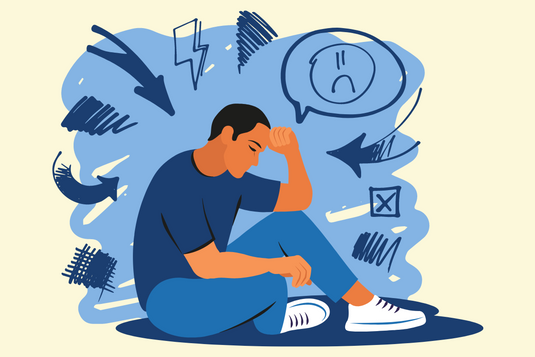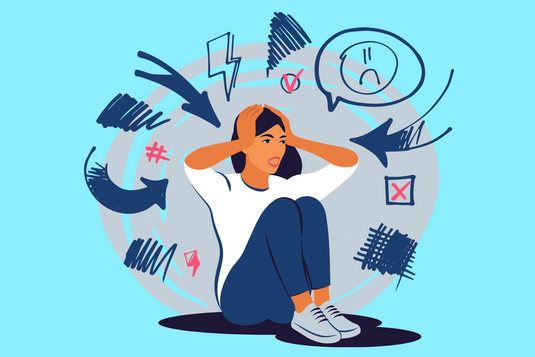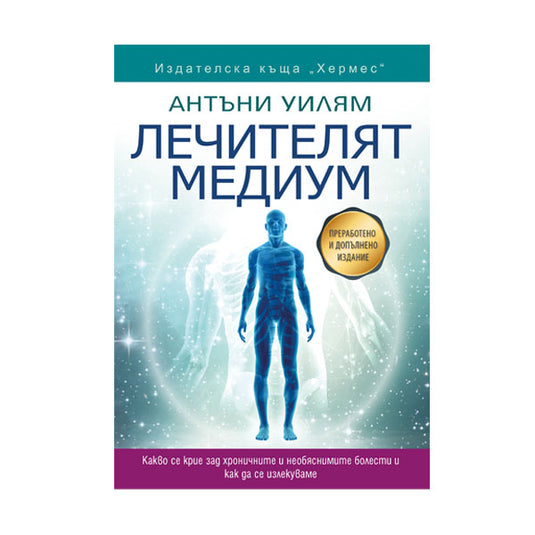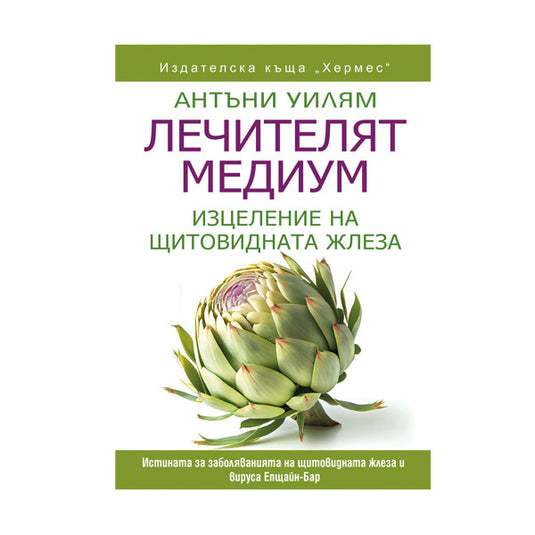No two people on the planet experience anxiety the same way. Everyone experiences it in their own way. For some, it manifests as a tightness in the chest, for others as dizziness, nervousness, a racing heart, or a feeling that they can’t breathe. Even when the symptoms seem similar, the internal experience is different for everyone. Many people don’t recognize their anxiety – they mistake it for a phobia, nervousness, or just a momentary overload.
Modern medicine often uses the term “anxiety” to describe a group of symptoms whose true source remains unclear. When a person experiences unpleasant feelings that disrupt their normal daily life, but all medical tests are “normal,” they are usually diagnosed with “anxiety.” In reality, this condition can range from mild inner tension to severe panic attacks that paralyze the body and mind.
Anxiety is often associated with stress, trauma, or difficult life events, but not all people who have experienced such circumstances develop anxiety. This shows that stress is not the real cause, but rather a trigger that activates an already existing vulnerability in the body. According to Anthony William, anxiety is not just an emotional state, but a signal of physical processes in the body – hidden factors that weaken the nervous system and create the prerequisites for anxiety.
What causes anxiety?
For a state of anxiety to develop, there must be a physical vulnerability in the body. A person can experience difficult life situations and still not develop anxiety if certain internal factors are absent. Without these deep physical causes, anxiety would not exist. We would feel fear or nervousness, but not that paralyzing feeling that interferes with our normal functioning. True anxiety is not just an emotional reaction, but a process in which something in the body affects the brain and nervous system.
Many people experience anxiety even when their lives seem to be in order, free from stress or trauma. They can be stable, successful, and content, but then suddenly experience a panic attack or constant inner anxiety for no apparent reason. This shows that anxiety is not just caused by emotions, but by something physical that is already present in the body. According to Anthony William, for chronic anxiety to develop, there must be at least one major neurotoxic factor—a substance or process that damages the nerves.
Anxiety is most often caused by neurotoxic exposures, which include toxic heavy metals , viruses , chemicals, and other substances that weaken and irritate the nervous system. Today, these exposures are more potent than ever: neurotoxic chemicals are added to perfumes, air fresheners, laundry detergents, cleaning products, pesticides, herbicides, and even fungicides used on new clothing and furniture. Even caffeine , monosodium glutamate (MSG), and radiation can stress and irritate the nerves.
Emotional experiences can temporarily trigger anxiety through adrenaline rushes, but they are not the cause of chronic anxiety disorder in themselves. When anxiety becomes persistent, it is a sign that there is one or more physical causes behind it that affect the nervous system and create a prerequisite for this condition.
Interrelated causes of anxiety
Anxiety usually does not stem from a single cause, but from a combination of factors. It is possible for a person to be simultaneously affected by toxic heavy metals , viruses , and various neurotoxic exposures . These elements often act together and amplify each other's effects.
For example, if someone experiences unexplained chest tightness accompanied by anxiety, it could be the result of a viral load , heavy metal build-up, or exposure to chemical irritants , or a combination of all of these factors. These factors can cause inflammation in the vagus nerve area, which in turn provokes feelings of anxiety and panic.
Neurotoxic exposures can increase anxiety in two ways:
- By directly damaging and irritating the nerves.
- By nourishing and activating viruses in the body.
Many chemicals used in everyday life – fragrances, perfumes, pesticides, cleaning products – are also toxic in two ways. On the one hand, they often contain traces of heavy metals in their composition, and on the other – their chemical formulas themselves damage nerves and stimulate viral activity. Even when they do not contain heavy metals, some substances can be strong enough to cause a neurotoxic reaction and lead to anxiety.
The combinations of factors in each person are unique. Different amounts of toxic heavy metals , different viruses , different chemical exposures , and individual characteristics of the nervous system make anxiety different for everyone. That is why it manifests itself in such a variety of forms – from mild inner tension to severe panic states.
Toxic heavy metals that interfere with signals in the brain
Many people with anxiety have a buildup of toxic heavy metals in their brains, which weaken neurotransmitters and disrupt electrical impulses between nerve cells. This leads to a natural vulnerability of the nervous system and makes anxiety more likely to occur.
These metals enter the body before birth, continue to accumulate throughout childhood and even into adulthood. Each person carries a unique combination of heavy metals, located in different areas of the brain, which explains why anxiety manifests itself differently in different people. For some, it is worse at night, for others in the morning or only at certain times of the day. Small differences in accumulation can lead to significant differences in symptoms.
It’s important to understand that toxic heavy metals aren’t just a factor that triggers anxiety—they’re a major cause. Over time, these metals oxidize, “vaporize,” and corrode, contaminating surrounding brain tissue. This process disrupts normal electrical signals in the brain, depletes neurotransmitters, and alters numerous chemical processes that are essential for a balanced state of mind.
Viruses that cause inflammation
The presence of viruses in the body is another major cause for concern. These pathogens can live in the liver and other organs and from there affect the cranial nerves – such as the vagus, trigeminal, facial and phrenic nerves – as well as the central nervous system. In some cases, viruses even penetrate the brain and cause local inflammation, but more often they act indirectly, through the toxins they secrete.
Toxic heavy metals and viruses often go hand in hand. Viruses feed on metals and other toxic substances accumulated in the body, and in the process they release waste products called viral neurotoxins. These toxins enter the bloodstream and irritate nerves, including those near or inside the brain. Modern viral toxins are especially aggressive because today's environment is saturated with a new type of chemicals that are more easily absorbed into tissues.
Even small amounts of these viral neurotoxins can cause severe sensitivity in the nerves and trigger anxiety. They can also penetrate the brain, causing an allergic reaction in the nervous tissue. Therefore, anxiety is often accompanied by other symptoms such as dizziness, blurred consciousness, mild headaches or a feeling of disorientation.
A person does not need to have high levels of toxic heavy metals for these effects to occur. It is enough for the viruses to feed on certain substances, including certain foods, such as eggs, to produce neurotoxins that affect the nervous system and cause anxiety, albeit in a milder form.
According to Anthony William, viruses are not just a factor that "causes" anxiety - they are the real cause. While medicine is still beginning to discover this connection, it is important to understand that viral load is at the root of many cases of chronic anxiety.
Chemical mixtures that feed viruses and irritate nerves
The modern chemical environment is one of the main reasons why anxiety has become such a widespread problem. Thousands of new chemical compounds are entering our daily lives – in fragrances, cleaning products, cosmetics, pesticides and the various synthetic mixtures we encounter every day. These substances not only directly irritate the nervous system, but also feed viruses, which in turn produce even more potent neurotoxins.
Chemicals can physically bind to nerve endings, causing inflammation and disrupting normal nerve conduction. With prolonged exposure or in an already sensitive nervous system – burdened by viruses, toxic heavy metals or radiation – even small amounts of these substances can trigger or intensify anxiety.
As the chemical industry advances, these new formulas become more potent and dangerous. Even without containing heavy metals, they can be as toxic to the nerves as the metals themselves, and often do. As a result, the cumulative effect of chemical stress on the body is greater than ever before, making the nervous system extremely vulnerable.
Radiation weakens nerves
Radiation can be both a trigger and a direct cause of anxiety, depending on the amount and frequency of exposure. Even a brief exposure like an X-ray or CT scan can leave an imprint on the nervous system, and accumulated exposure over years can gradually weaken and slow down the nerves. So even decades later, a person may feel its effects in the form of anxiety or other nervous symptoms.
Modern humans are also exposed to other sources of radiation – airport scanners, mobile devices, wireless networks. Although radiation does not feed viruses, it weakens the immune system because it penetrates deep into bones and nerves, making them more vulnerable to inflammation and irritation.
With low but prolonged exposure , radiation can act as a trigger that enhances pre-existing nerve sensitivity. However, with more intense or cumulative exposure, it can become a real cause of anxiety, directly damaging nerve pathways and disrupting their electrical balance.
After examining the main physical causes of anxiety, in the next part we will focus on the triggering factors – the circumstances and events that activate these vulnerabilities and lead to the manifestation of anxiety symptoms.
Stay tuned for part 2 of the article “Anxiety Triggers” soon.
If you want to learn more about the various topics covered in the article, read the following articles published on our blog:
- “Pests that make us sick – toxic heavy metals”
- “Cleansing of toxic heavy metals by the Healer Medium”
- “Heavy Metal Detox Smoothies”
- “Advanced Heavy Metal Detox Smoothies”
- “Shot from exposure to toxic heavy metals”
- “Pests that make us sick – viruses and viral waste”
- “[Video] Are viruses and toxic heavy metals causing your symptoms?”
- “Pests that make us sick – industrial chemistry”
- “Pests that make us sick – household chemicals”
- “Pests that make us sick – radiation”
- “Radiation exposure shot”
- “Why caffeine is a problem food”
- “How to Heal Your Nervous System”
- “[Video] Inflammation of the vagus nerve”














